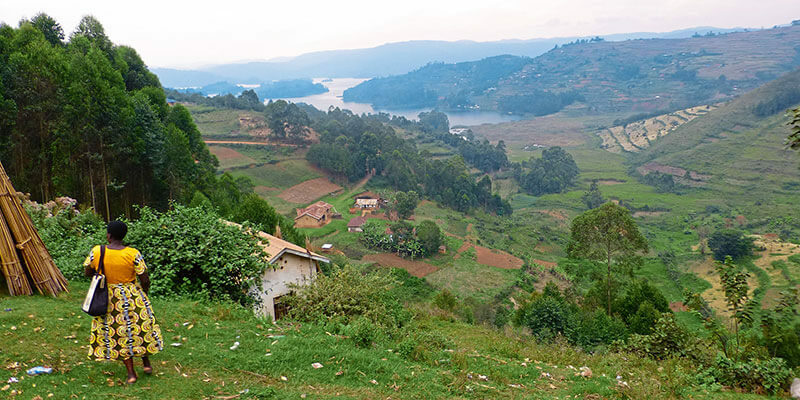Stig Enemark explains the concept of land governance and importance in supporting the 2030 global agenda.

The term “land governance” is relatively new. It appeared in the early 2000s as an extension of the concept of “land management” to also include the aspect of governance and the political economy of land. This is seen as highly relevant when addressing current complex challenges such as poverty alleviation, climate change, rapid urbanisation, food scarcity and natural disasters. Many of these challenges have a clear land dimension, such as unequal access to land, insecurity of tenure, unsustainable land use, and weak institutions for conflict resolution. Land governance, therefore, has a key role to play when addressing the 17 Sustainable Development Goals and the connected range of targets and indicators.
Land governance is about the policies, processes and institutions by which land, property and natural resources are managed. It concerns the rules, processes and structures through which decisions are made about access to land and its use and development, the way the decisions are implemented and enforced, and the means through which competing interests in land are managed. As stated by FIG and the World Bank, land governance is basically about determining and implementing adequate and sustainable land policies.
Land governance covers all activities associated with the management of land and natural resources, which are required to fulfil political and social objectives and achieve sustainable development. This relates specifically to the legal and institutional framework for the land sector. As shown in Figure 1, the operational component of the land governance concept is the range of land administration functions including land tenure, land value, land use and land development. These functions interact to deliver overall policy objectives and are facilitated by appropriate land information infrastructures providing the relevant data on the build and natural environment. The outcome is a key means in delivering economic, social, and environmentally sustainable development.
The land governance components
The organisational structures for land governance and administration differ widely between countries and regions throughout the world and reflect the cultural and judicial setting of each country and jurisdiction. Furthermore, the judicial and institutional arrangements may change over time to better support implementation of land policies and good land governance.
A simple entry point for understanding the land governance issues is presented in Figure 2 showing the hierarchy of land issues ranging from the land governance, over land policy, land management, land administration, SDI, cadastre and, eventually, to the land parcel as the key object for identification of land rights and administration of land use restrictions. The land parcel simply links the system with the people.
This hierarchy of land issues illustrates the complexity of organising policies, institutions, processes and information for dealing with land in any society. However, it also illustrates an orderly approach represented by the seven levels. This conceptual understanding also provides an overall guidance for building, maintaining, and improving land governance systems in any society no matter their level of development.
All countries need to deal with the management of land. In the more developed parts of world, the systems for governing and administering land issues have evolved to an advanced level for coping with cultural and economic development. Looking at the less developed parts of the world, in many countries, and especially in the Sub- Saharan Africa region, the basic systems of land registration are still not in place. In these countries, more than 70% of the land and people are outside the formal systems that tend to serve mainly the elites and the perspectives of human rights and sustainability are largely ignored. In such regions, there is a need to improve the land governance systems more generally to cope with current and future challenges.
The global agenda
The UN Sustainable Development Goals (SDGs) provide a framework around which governments, especially in developing countries, can develop policies for sustainable societal development and encourage overseas aid programmes designed to alleviate poverty and improve the lives of the poor. The SDGs also represent a rallying point for NGOs to hold governments to account.
Effective land governance relates to a range of the goals and targets of the SDGs. The SDGs are a key driver for countries throughout the world, and especially developing countries, to develop adequate and accountable land policies and regulatory land governance frameworks for poverty reduction, food security, gender and social equity, and sustainable management of urban and rural land use and natural resources. There is a consensus that governing the people to land relationship
is at the heart of this global agenda.
The challenges ahead
The key challenges ahead relate to implementing responsible and country wide land governance infrastructures and providing secure land rights at scale. This relates to addressing the institutional issues regarding the country specific political economy and the various vested interests apparent especially in developing countries, where the systems are often suffering from colonial legacy and legal dualism.
Technology development and the push from the global agenda, including the recent developments of UN-GGIM such as the Interactive Geographic Information Framework and the Framework for Effective Land Administration, are seen as key drivers for change in terms of providing the spatial and geographic information frameworks. Together with the recent FIG-based developments such as the Land Administration Domain Model and the Fit-For-Purpose Land Administration approach, these tools are bringing many countries a significant step forward.
However, especially in developing countries, a major challenge remains in relation to building appropriate and inclusive legal and institutional frameworks, and the connected capacity to manage and maintain sustainable land governance concepts. It is argued that FIG and the global land community has a key role to play in this regard.
Stig Enemark is FIG honorary president and professor emeritus of land management at Aalborg University, Denmark


